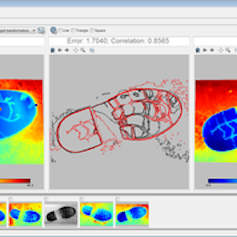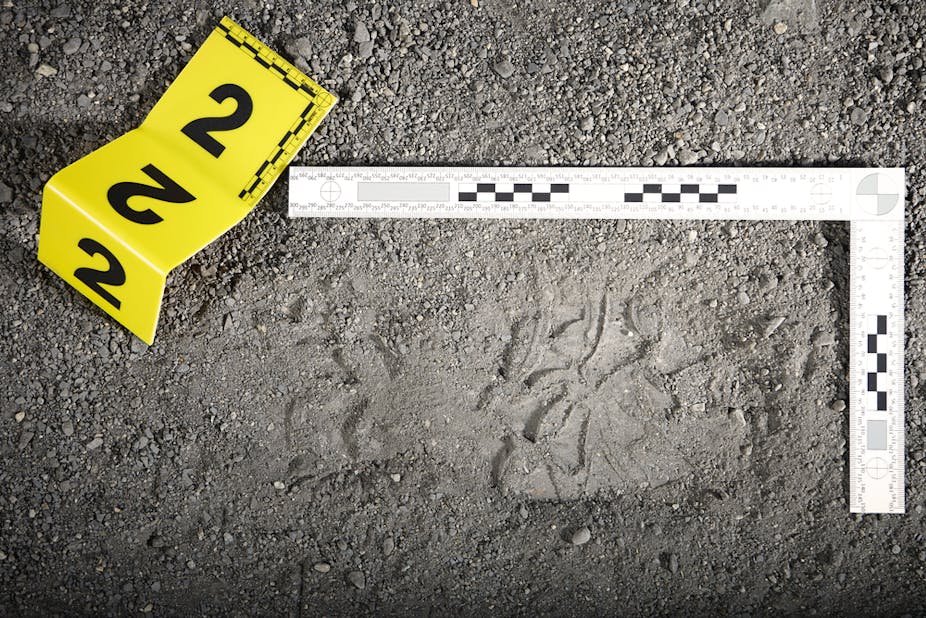A fossil footprint is one of the most evocative insights into the past. It can tell you not only about presence, but also about the biomechanics of the track-maker. We have studied ancient footprints from around the world for more than a decade – and perhaps most notably we were part of the team that discovered the second oldest human footprints at Ileret in northern Kenya in 2009. They date back 1.5m years and were likely made by Homo erectus.
Over the past ten years, we have witnessed unparalleled technological advances. We used to take a large, expensive and delicate optical laser scanner into the field, encased in a shroud specially made by a sail maker. I remember with horror how it exploded on the first day of one particular field trip.

It had been flown at great expense first to the Kenyan capital, Nairobi, and then on a small plane which landed on a dirt strip. But then, on its first day out, it was connected to a generator supposedly that had been repaired in a back street Nairobi shop – and the sparks flew. My colleagues had to infill the excavation and it was another six months before I was back out with a repaired scanner and a new generator.
These days, thankfully, we need nothing more than a digital camera in the field. We take 20 pictures from different angles and I have a 3D model to rival those I once created by physically scanning the footprint. And with far fewer headaches. In fact, in October, Microsoft demonstrated a 3D scanner that works on a smart phone – technology is changing fast.
Great leaps forward
Despite this, 3D models have yet to make an impact in some areas. One of these is in the analysis of footwear evidence at crime scenes. Here, traditional methods of photography and casting still prevail and footwear evidence is no longer routinely collected at many crime scenes. Yet it has real power, especially when brought into 3D – and the 21st century.
Footwear impressions provide an important source of evidence from crime scenes. They can help to determine the sequence of events and – if distinctive due to the wear patterns – can link a suspect to multiple crime scenes. The value is not only as a tool in prosecution, but crucially in intelligence gathering often around petty crime. Unfortunately, it isn’t being routinely used – at least until now.

Working with a talented team of software developers, we have now translated academic know-how and software developed for research into a freeware package that puts 3D tools into the hands of everyone. Over the past year, with funding from a Natural Environment Research Council Innovation Award and with the help of the Home Office and the National Crime Agency, we have developed DigTrace a bespoke software tool for footprint analysis. This tool is now freely available to police forces and forensic services both in the UK and overseas.
DigTrace is the first integrated freeware product that allows crime scene officers to capture 3D images of footwear impressions with nothing more than a digital camera and then to visualise, analyse and compare these traces digitally. It integrates fully with existing databases and approaches and we hope it will change the cost benefit equation of footwear analysis.
From the extraordinary to the everyday
The use of 3D modelling of this kind need not only be used in high capital crimes but can also be used to tackle the petty crime that often plagues society. Take, for example, a series of grass verges on the edges of car parks of ill repute. Using this tool, you can easily scan footprints in these areas. And if you can link the same piece of footwear to several of these disreputable areas, you know you are looking for one individual or group rather than several. The power lies in improving intelligence.
We’ve been developing the software for the better part of a decade. What started as a collection of tools for addressing specific research tasks, built using a variety of technologies, has now been consolidated with the help of NERC into a standalone software suite. There is some neat mathematics that underlies the various 3D transformations required. Keeping things simple, however, has been the key to building trust with end-users who are not computer scientists.
At the heart of the approach is the idea of digital photogrammetry – take a series of images, identify common pixels in each and triangulate the pixels to define their location in 3D space. The result is a 3D pixel cloud that can be scaled, transformed and surfaced. We are actively researching the enabling technology here at Bournemouth University to develop new tools from this basic premise. Creating 3D models from video and even CCTV footage is in our sights. Our aim is to provide tools that make society safer, not just from high profile-crime, but that which affects everyday lives.
While DigTrace may help fight crime, it is also there for geologists and archaeologists to help them study dinosaur or ancient human tracks. The use of 3D data is a brave new world from printing in 3D to developing tools that visualise and analyse such data – and it is helping to bring the recent, and most distant, past to life.

